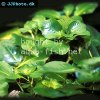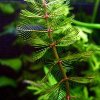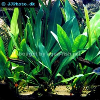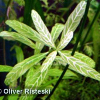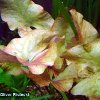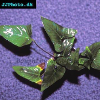How to Choose and Acclimate Plants in an Uncycled Aquarium
Quick navigation
Introduction
A common misconception to most novice fish keepers is that plants cannot be added to an uncycled aquarium. The first notion is that the plants will die off causing further problems but this couldn’t be further from the truth.
Why Let Your Aquarium Settle Before Adding Plants?
Once a new aquarium set up has been filled with water it should be allowed to stand for 24 hours to monitor the temperature if a freshwater tropical tank is being used, even if a cold water set up is up and running the water should still be left for 24 hours to settle and then plants can be added to the tank. The addition of the plants at an early stage in the aquarium set up will benefit the long term running of the tank and it will also give the plants to establish themselves before any fish are added.
If you ask most keepers what do plants feed from in the water column they will reply with the answer “nitrates”, yes this is true but plants are in fact very lazy feeders and they will grab the most readily available food source, in an uncycled aquarium this is initially ammonia and nitrites. This explains why you need to add more ammonia to the tank if it contains plants compared to a tank containing no plants when you are cycling. Ammonia and nitrites are very easily digested by the plants, because they can be unstable they also affect the fish in the aquarium, nitrates are comparatively inert and levels up to 100 ppm can be tolerated by most species of fish (some species of fish demand maximum quality in the water). In a mature set up the plants depend on the nitrates to feed as the ammonia and nitrites should be zero, theoretically when you trim back a plant after it has consumed nitrates you are also removing the nitrates from the aquarium as you discard the cuttings, this is also a reason why planted tank keepers do not need to perform as many water changes as keepers of tanks without plants.
After reading the last paragraph you may think to yourself that adding the plants at an early stage will slow down the cycle, this is true for the first couple of days but as you add ammonia to the tank things will settle down and the cycle will run through with no problems. Looking at it on another route, the plants will actually benefit the cycle as they will release oxygen into the water which will encourage the beneficial bacteria to colonise faster so there is two sides to the coin and the advantages of early planting far outweigh any potential disadvantages.
What you should expect in the first couple of weeks is a small amount of die back from the plants, this happens when plants are first added to the aquarium whether it is cycled or not. This initial die back is probably what sparked up the argument about planting an uncycled aquarium in the first place, if the plants are left to their own devices and any brown or rotting leaves are removed, they will quickly pick up and grow out as normal.
There is one particular point that should be noted, water changes tend to be missed for the first month of the cycle to prevent the cycle from taking longer, by the end of the month the minerals in the water will be depleted so dosing the tank with liquid food for the plants should be adhered to as well as allowing them to soak up the nitrates. Some plants are also classed as root feeders so when planting these it is advisable to add either root tabs to the planting area or set up the tank initially with a commercial aquatic fertiliser medium below the substrate. Choice of plants can also be crucial as less hardy plants may not fair too well in a new set up, n fact some species such as Cryptocorines will normally “melt down” if added to an uncycled aquarium, species like these are best left until the tank has matured.
Suggested species of plants for an uncycled aquarium
The species listed below are purely suggestions, there are far too many to provide a complete list, these have been chosen for ease of growth and general aesthetic qualities. When selecting your plants try to choose plants that grow to different heights so that you can add the tallest plants at the back of the aquarium with the lowest at the front.
Amazon Swords
There are many species of these ranging from the giant amazon swords right down to pygmy swords. Always check which species you have purchased so that you can place them in the aquarium correctly. These take little to look after and some leaves will die off when first planted but they will grow new ones and make a stunning display.
Vallisneria
These have to be the most instantly recognisable aquatic plant that there is, they grow long slender leaves right up to the water surface and when planted in groups make a stunning display. One species that strikes out for me is the twisted Vallisneria, its leaves spiralling upwards with a rich,dark green colouration.
Java Ferns
One of the hardiest plants available, these will need attaching to a piece of décor, bog wood or a rock will suffice and will grow in clumps once established. They propagate by producing small plantlets at the tips of their leaves, fascinating to see as the plantlets break away if left, and drift around the aquarium looking for anchorage on other décor. They also require low lighting so a standard aquarium lighting unit is ideal for these.
Java Moss
If you want to be creative, this is the plant for you. Like the Java Fern, this plant does not require a great amount of lighting and also needs attaching to either bog wood or rock. Once it has established it will spread to form a carpet over the décor and if fed correct; will also display a rich, dark green colouration.
Anubias
A very slow growing plant but ideal for any keeper who does not want the chore of regular pruning of plants. These are available in several species, one or two of the species can be planted in the substrate but most require anchoring to bog wood or rock. As they are slow growing there may be some algae appear on the leaves at first but this should die off as the tank matures.
